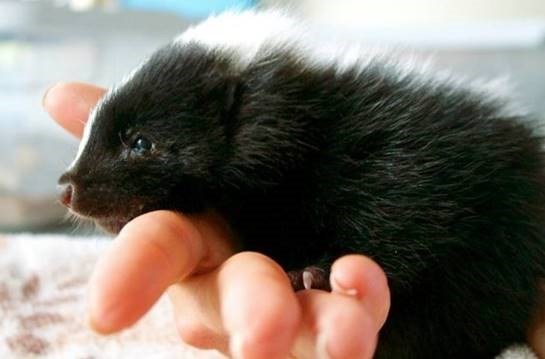This summer has been very active for skunk families taking up residences under people’s porches, sheds and decks. The young skunks are now becoming quite active and this means: let’s play with our new stinky spray. Of course skunks are notorious for their anal scent glands, which they use as a defensive weapon. Skunks have a gland on each side of the anus. These glands produce the skunk's offensive and nauseating spray, which is a mixture of sulfur-containing chemicals such as thiols, 2-butene-1-thiol, 3-methyl-1-butanethiol, and 2-quinolinemethanethiol, as well as acetate thioesters of these. Muscles located next to the scent glands allow them to spray with a high degree of accuracy (I will testify in court), as far as 3 metres. The spray can cause irritation and even temporary blindness, and is sufficiently powerful to be detected by a human nose up to 1.6 km downwind. Skunks are reluctant to use this weapon, as they carry just enough of the chemical for three to six uses and require some ten days to produce another supply. The great horned owl is the skunk's only regular predator. If you, your pets or outdoor furniture has been sprayed by a skunk, here is what I use to almost entirely kill the smell.
De-skunking recipe: Combine 1/2 quart hydrogen peroxide, 1/8 cup of baking soda, and 1 teaspoon liquid dishwashing soap in an open container. Apply the solution to the affected area, scrub it in, let it sit for a while, and thoroughly wash it off, repeat.


